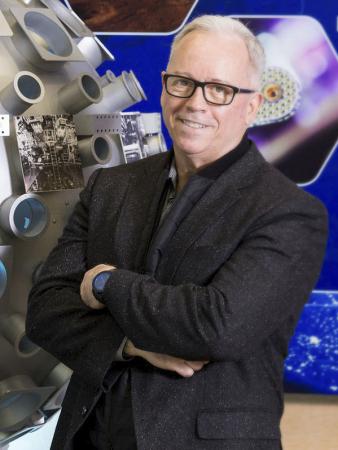
Frank Graziani
Frank Graziani
Lawrence Livermore National Laboratory
Friday, May 24, 2019
3:00pm
Abstract: High energy density physics (HEDP) is the study of matter at extreme conditions where energy densities are in excess of 10^12 ergs/cc or equivalently, pressures are in excess of 1 Mbar. HEDP spans a wide range of phenomena, from the deep interiors of the giant planets to the hot plasmas typical of stellar interiors. Matter in the HEDP regime can involve some combination of the following phenomena, collective effects, electron degeneracy, radiation, atomic kinetics, strong particle-particle correlations, non-equilibrium and hybrid quantum-classical behavior. In this talk I focus on an important component of executing experiments at any HEDP facility-simulation. I discuss the spectrum of computational approaches HEDP scientists use to model their experiments, from hydrodynamics, to kinetic theory to particle based methods. I discuss the strengths and weaknesses of the various computational approaches and briefly touch on two recent advances that may hold promise to enhancing the current weaknesses. The talk ends with a discussion of the High Energy Density Sciences Center, which is an outreach organization at LLNL that is building a HEDP community through interactions of LLNL scientists withacademic collaborators.
Bio: Frank Graziani received a B.S. in physics from Santa Clara University, and a PhD in physics from the University of California, Los Angeles. His thesis work was on the non-perturbative aspects of quantum field theories such as quantum chromodynamics. Frank Graziani was a postdoctoral fellow at the University of Colorado and the University of Minnesota where he worked on cosmology and particle physics. He was a frequent visitor at NASA-Ames Research Center where he worked on exo-planet dynamics and star formation in molecular clouds. Frank Graziani joined Lawrence Livermore National Laboratory in 1989 as a computational physicist. Since then he has held various leadership positions at the Laboratory, including Associate Division Leader for Computational Physics, National Boost Initiative Leader, and Principal Investigator for two LDRD-Strategic Initiative projects. Frank is currently director for the High Energy Density Sciences Center. He has won four DOE Defense Program Awards (1999, 2002, 2013 and 2017) and the LLNL Director’s S&T Award (2012). In 2017 he was awarded Distinguished Member of the Technical Staff at LLNL. His research interests include understanding the micro-physics of hot dense plasmas using N-body simulation tools and kinetic equations, quantum hydrodynamics and various issues surrounding burn physics. He has authored over 100 publications in refereed journals and he is the editor for two books on computational methods for particle transport, and a book on warm dense matter physics